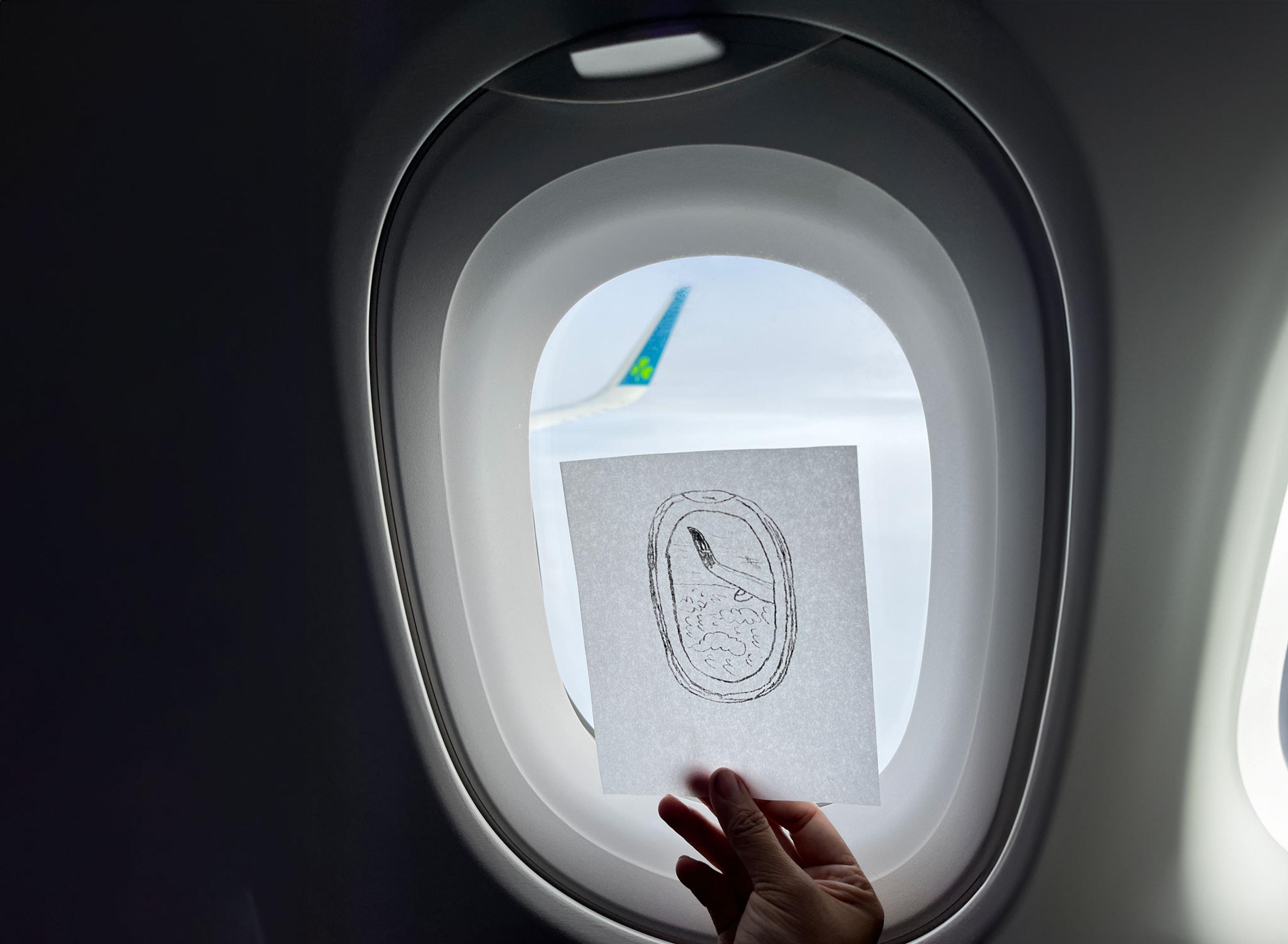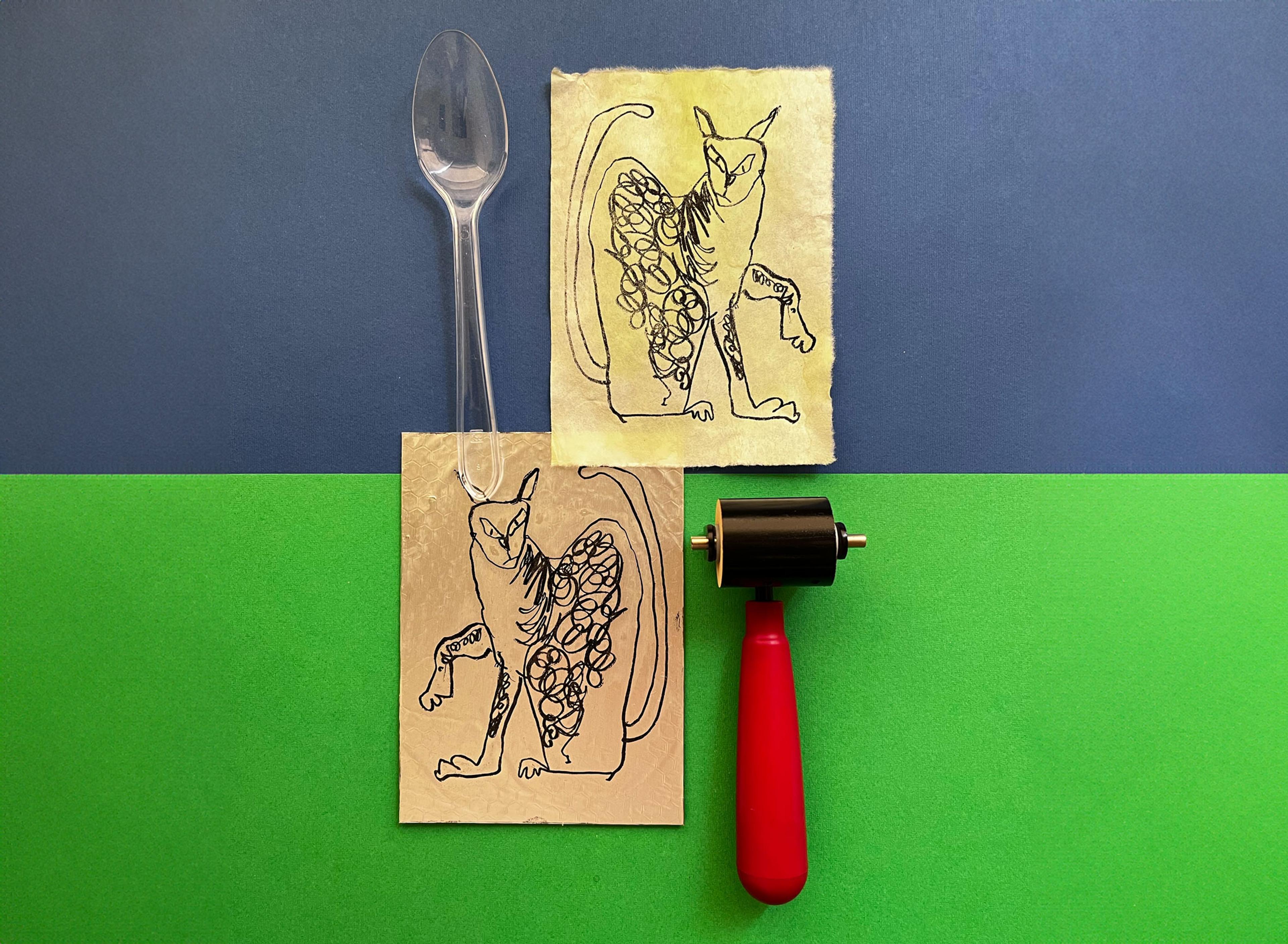A Q&A with illustrator and print-maker Viola Wang
by Viola Wang, illustrator and print-maker
Viola Wang is a visual artist and author working in painting, bookmaking, illustration, murals and education, she also is the illustrator behind our popular 'Make a Lithography' online workshop. Here we speak to Viola to learn a little bit more about her.

How did you get into printmaking?
Having practically grown up in a printing factory where my father worked, the smell of ink and the rhythmic drone of machines formed the backdrop to my childhood. It wasn't until much later, during my postgraduate illustration studies, that I discovered the captivating world of printmaking. I was seeking a fresh visual language, and the print room became my haven. It opened up a whole new realm of creative possibilities, particularly for my work as a children's book illustrator.
What do you like about the kitchen lithography process?
Of all the printmaking processes, lithography holds a special place in my heart. As a draftsperson, the ability to create direct impressions from drawings is a pure joy. For some years, I have travelled throughout Britain, seeking out the dwindling number of studios that still house traditional lithographic presses.
When my students challenged me to find a more accessible and eco-friendly way of doing lithography, it sparked a journey that led to kitchen lithography. This innovative approach replaces the traditional stone plate with kitchen foil and uses cola as a non-toxic alternative to acid. The entire process can be completed on a tabletop, making it perfect for anyone interested in exploring printmaking without the need for specialised and heavy equipment.

What materials do you use?
For kitchen lithography, your pantry and cupboards become your art supplies! Grab a can of cola from the fridge, some foil from the drawer, a washing-up sponge from the sink, and a couple of spoons from the cutlery drawer. Sounds too good to be true? Trust me, it’s magical!
Here's a fun trick: you can use ordinary chocolate bars as a drawing tool for kitchen lithography. They have the ideal composition of fat and grit, mimicking the effect of a professional litho crayon.

Do you work in a studio?
My kitchen is my studio. Everything I need is within arm's reach. It may be small, but that's not an issue. Think about it—a kitchen is designed for making things. It’s quite logical, really.
Where are some of the most unusual places you’ve made prints?
I've been having fun taking kitchen lithography everywhere I go because the process is so accessible and the materials are widely available!
So far, I’ve made lithograph prints on an aeroplane thousands of metres above the ground, on a running train at 125 mph, and on a ferry in the middle of the sea. Not to mention camping trips (setting up a studio in our ‘camper car’), in the pub, and on a hotel windowsill.

Can you tell us about your Instagram 100 Days Challenge: Printmaking #100dayschallenge?
As a teacher, summer break offers a valuable opportunity to develop new teaching materials. However, it also means I'm away from the printmaking studio, just like many of my students. The limited access to resources can serve as an interesting starting point for exploring creative solutions.
Last summer, I decided to make my vacation more productive by challenging myself to a daily printmaking project for 100 days. My goal was to use found, recycled or repurposed materials for each print project. Initially, it was surprisingly challenging to determine the best printmaking technique based on a randomly found material. The process involved a lot of trial and error, and some days were filled with frustration as nothing seemed to work. However, the overwhelmingly positive response on social media was incredibly humbling and motivating. The online creative community was very supportive, offering daily comments and suggestions that fuelled my excitement and made the challenge even more rewarding.

You recently completed a residency in Ireland?
The two-month residency at Creative Spark in Ireland was an invaluable experience, providing me with both a dedicated space and a vibrant community of artists, designers and engineers to research kitchen lithography. Working alongside such a diverse group has deepened my understanding of the process, and I’ve even made a few breakthroughs! I’m eager to share everything I’ve learned with you soon.
How do you balance finding the time for making experimental personal work with meeting project deadlines?
Time is a constant challenge. As illustrators, our lives are dictated by deadlines, and publishing is a complex machine that demands every stage be in sync. However, I’ve come to increasingly value the time dedicated to exploration and experimentation. It’s like nourishment for creativity, keeping it healthy and fostering growth. Remember, you can always make time for the things you love.
My advice? Set up a dedicated space for play and make sure to protect that time fiercely.
What can someone who is thinking of taking your Introduction to Kitchen Lithography course expect?
Lithography is one of the most complex processes in printmaking. Unlike relief printing and etching, where the physical changes to the matrix are easily observable, lithography relies heavily on chemical reactions. These reactions can be subtle, sometimes barely perceptible to the naked eye, making the process less intuitive to grasp.
My advice for approaching lithography is to be open-minded, trust the process, and embrace experimentation with the materials. Don’t be discouraged by the initial learning curve—it's all part of the journey! Prepare yourself for a rewarding experience filled with discovery and a whole lot of fun!

Do you have any favourite illustrators?
I'm particularly drawn to mid-century British illustrators like Edward Bawden and Eric Ravilious. Their work is incredibly diverse, spanning book illustrations, magazine covers, posters and advertisements. I love how their art captures the changing social and cultural landscape of their time while pushing the boundaries between fine and applied arts.
Furthermore, contemporary artists like Mark Hearld, Jonny Hannah, Charles Shearer, Laura Carlin and Oliver Jeffers are a constant source of inspiration for me. The way they consistently push the boundaries of their craft is truly admirable.
What are you working on next?
Currently, I’m working on a book about kitchen lithography. It’s been an inspiring journey, blending my own experiences with the collective wisdom of fellow printmakers. I’m excited to share it with the printmaking community soon. Stay tuned!
Images © Viola Wang Studio